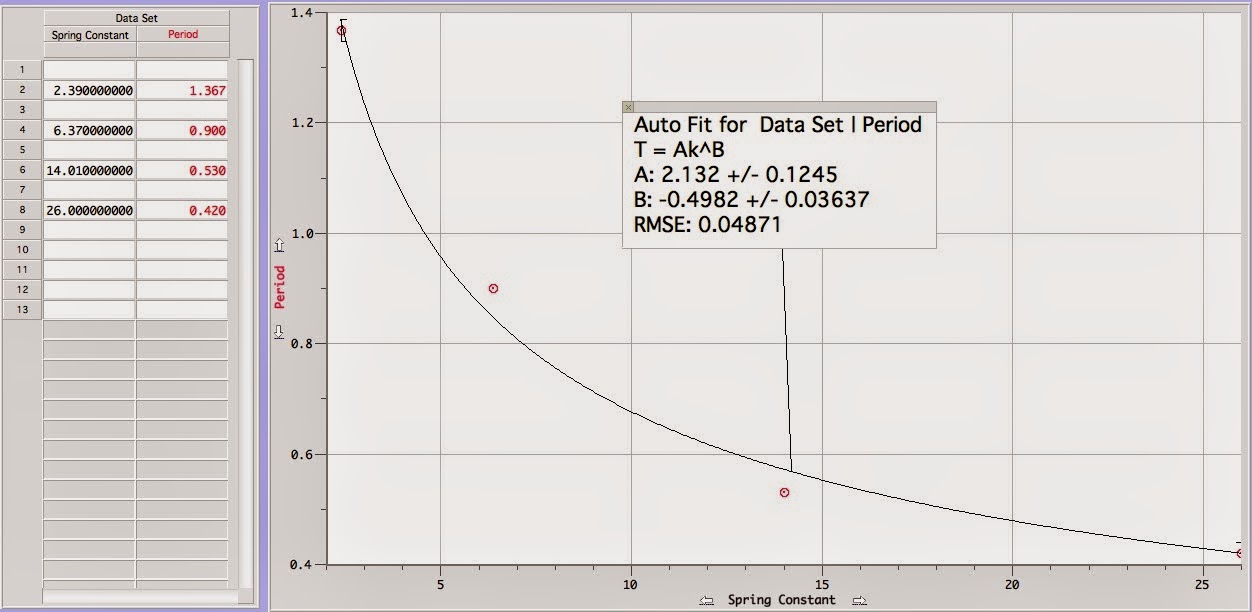Procedure
What we used:- logger pro + motion sensor
- spring
- hanging mass(es)
- first we had to calculate what the spring constant of our spring
- then logger pro and the photo-gate were set up
- the pivot is then placed at one of the locations (centered base or the top point) of the semicircle
- the period is measured
Data
 | |
| This is the data (right side) to help with finding the period vs spring constant |
Data Analysis / Calculations
We found the spring constant by measuring the height away from the motion sensor when the spring has a given hanging mass and the distance away with a different hanging mass. We then took the difference of the hanging masses and the displacement. We then found k through its relationship of F vs x.
 |
| How we calculated for our spring constant |
 | |
| The expressions for what the period should be. Period vs Mass T = 1.678 m ^ 0.5 and Period vs Spring Constant T = 2.07 k ^ (-0.5) |
 |
| This is the graph for the Period vs Mass. T = 1.971 m ^ (0.5556) |
 |
| This is the graph for the Period vs Spring Constant. T = 2.132 k ^ (-0.4982) |
Summary
In the lab, our results came close the calculated values. We calculated period vs mass T = 1.678 m ^ 0.5 and our experimental expression came out to be T = 1.971 m ^ (0.5556). For period vs spring constant we calculated T = 2.07 k ^ (-0.5) and in the experiment we got T = 2.132 k ^ (-0.4982)Our results came close to the calculated values that we can call the experiment a success.

No comments:
Post a Comment